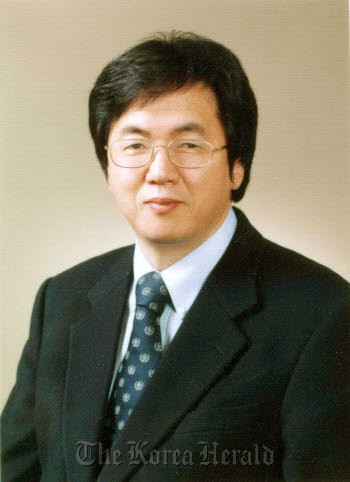‘New reactor design will boost Korea’s competitiveness’
By Shin Hyon-heePublished : March 26, 2012 - 20:02
Spurred by its robust drive to export nuclear plant technology, Korea will be rolling out a next-generation reactor that is safer, better performing, built faster and more cost-effective next year, the industry’s top expert said.
The new model, named APR+, is a brainchild of the government’s “Nu-Tech 2015” package initiated in 2006, aiming to secure technological independence and shake off any lingering barriers to exports by the end of 2015.
Succeeding the APR1400 currently in operation, the APR+ will be certified by the U.S. Nuclear Regulatory Commission within this year, said Chang Soon-heung, a prominent atomic specialist who has been overseeing the project since 2006 and advising involved engineers and officials.
The new model, named APR+, is a brainchild of the government’s “Nu-Tech 2015” package initiated in 2006, aiming to secure technological independence and shake off any lingering barriers to exports by the end of 2015.
Succeeding the APR1400 currently in operation, the APR+ will be certified by the U.S. Nuclear Regulatory Commission within this year, said Chang Soon-heung, a prominent atomic specialist who has been overseeing the project since 2006 and advising involved engineers and officials.

“Korea’s technology has advanced to the level where it can edge out leading players that have long dominated the industry,” said Chang, president of the Korean Nuclear Society and a professor at Korea Advanced Institute of Science and Technology in Daejeon,
“The APR+ can ensure greater function and safety with passive safety systems than now.”
The APR+’s heat output reaches 4,308 megawatt thermal, up nearly 8.2 percent from the APR1400’s 3,983, with the number of fuel assemblies increasing by 16 to 257, according to Korea Hydro & Nuclear Power Co., the state-run atomic plant operator.
Based on natural circulation, the next-generation reactor’s safety does not depend on active interventions. Instead, the passive safety features maintain coolant flows for 72 hours even after the cooling system fails and operators take no action, it said.
The government launched the Nu-Tech program in 2006 as it scrambles to expand its foray into the global nuclear plant market following a landmark deal with the United Arab Emirates in 2009, worth $20 billion.
With the global nuclear industry fast evolving, however, it brought its due forward three years to speed up progress and thus boost export prospects.
The APR+’s major competitors are Areva’s EPR1600, Mitsubishi’s APWR1700, Westinghouse’s AP1000.
U.S.-based Westinghouse’s Advanced Passive 1000, for instance, features a large emergency water pool above the reactor vessel controlled by valves.
In the aftermath of last year’s Japanese calamity, the once fast-growing sector faces a deepening anti-nuclear sentiment and political challenges across the globe.
Chang, 58, has visited Tokyo Electric Power Co. and its crippled plants last year as one of four international experts of the investigation committee on the Fukushima meltdown.
While acknowledging the safety priority, however, he forecasts the industry will gradually spring back, driven by growing concerns about global warming and a power crunch.
“Taking lessons from Japan, we should keep safety as a priority at this point. Still, nuclear power plays a pivotal part in the national and international economy by supplying electricity at affordable prices,” Chang said.
With stalled plans being resumed slowly, Seoul officials are gearing up for orders from such countries as Turkey, Finland, Vietnam and Saudi Arabia.
“Success in mature markets like Finland will be significant for the Korean nuclear industry,” Chang said.
“I believe Korea can penetrate the European market as shown during the UAE auction. It has necessary technology, infrastructure, safety measures and price competitiveness.”
By Shin Hyon-hee (heeshin@heraldcorp.com)


![[Exclusive] Korean military set to ban iPhones over 'security' concerns](http://res.heraldm.com/phpwas/restmb_idxmake.php?idx=644&simg=/content/image/2024/04/23/20240423050599_0.jpg&u=20240423183955)

![[Graphic News] 77% of young Koreans still financially dependent](http://res.heraldm.com/phpwas/restmb_idxmake.php?idx=644&simg=/content/image/2024/04/22/20240422050762_0.gif&u=)



![[Pressure points] Leggings in public: Fashion statement or social faux pas?](http://res.heraldm.com/phpwas/restmb_idxmake.php?idx=644&simg=/content/image/2024/04/23/20240423050669_0.jpg&u=)









